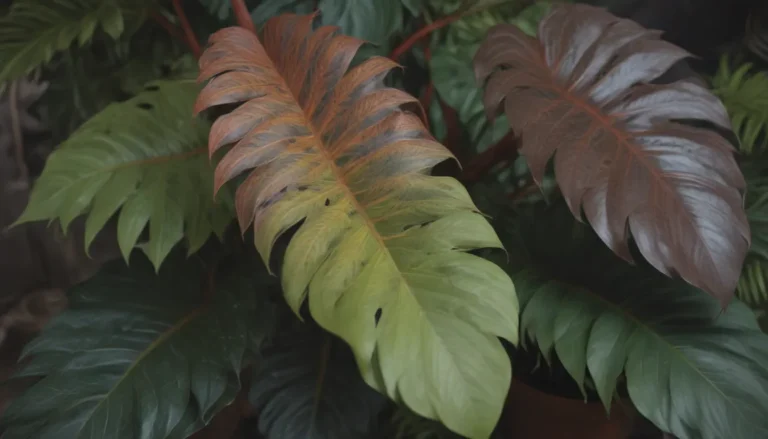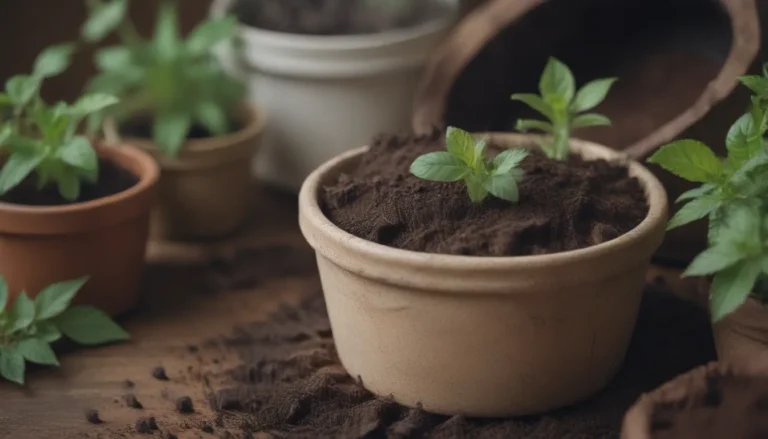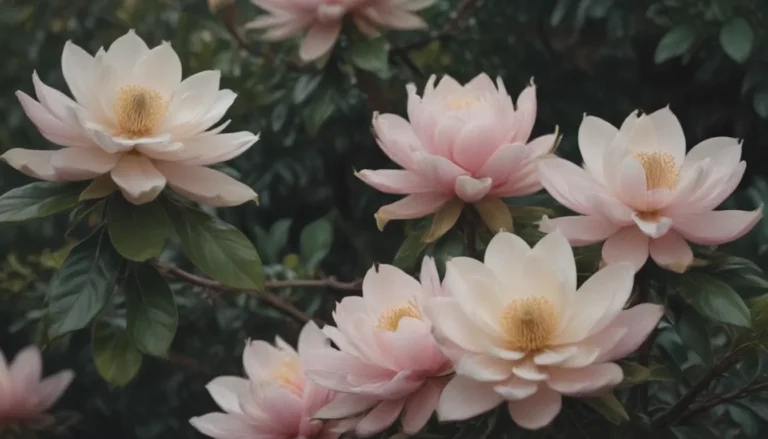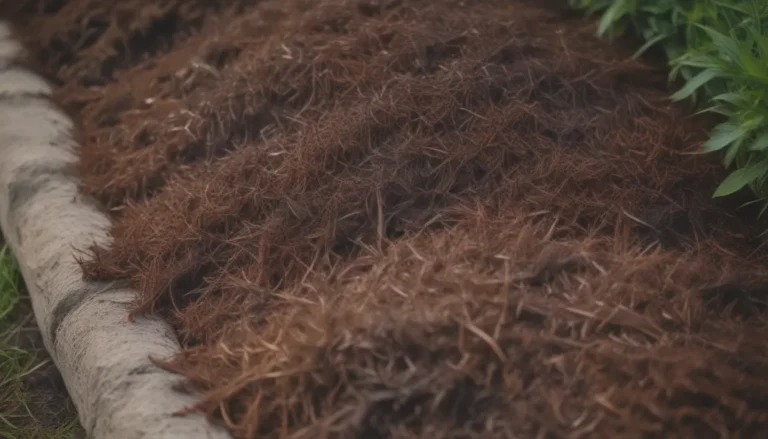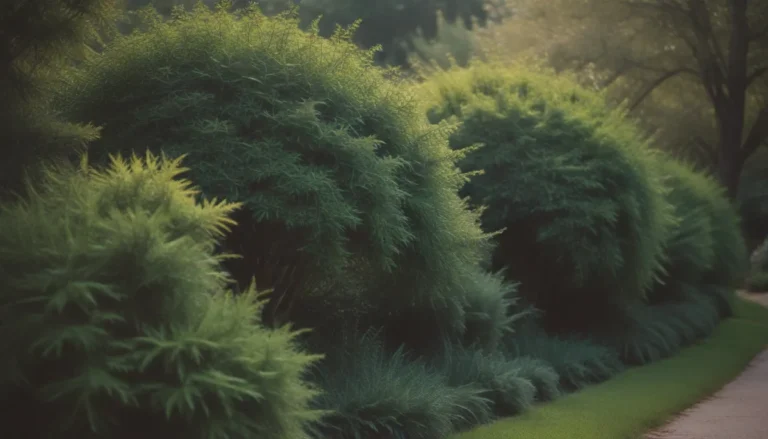A Guide to Creating a Hummingbird Haven in Your Yard

Are you looking to attract the beautiful and delicate hummingbirds to your yard? These winged wonders are not only a joy to watch but also play a crucial role in pollination. If you want to create a welcoming environment for hummingbirds in your garden, planting the right flowers is key. While red flowers like columbine and crocosmia are often associated with attracting hummingbirds, these tiny birds actually love nectar-rich flowers in a variety of colors.
In this comprehensive guide, we will explore 19 of the best plants that will attract hummingbirds to your yard. From vibrant reds and oranges to soothing blues and purples, these flowers are sure to catch the attention of these tiny creatures. Additionally, we will discuss important factors to consider when selecting plants for your garden, such as vine, bush, and herbaceous perennial options that provide structural elements and create distinct outdoor spaces.
Flower Factors to Consider
When selecting plants for your hummingbird garden, consider the following factors to ensure a diverse and attractive floral display:
- Flower Color Varieties
- Light Requirements
- Soil Needs
- Mature Size
- Deer Resistance
Vines, Bushes, and Herbaceous Perennials
Vines and bushes are essential for creating a landscape that attracts hummingbirds. Bushes can serve as structural elements to define outdoor spaces and borders, while vines can add visual interest and height to your garden. Consider incorporating a mix of annuals, perennials, and vines to create a diverse and inviting habitat for hummingbirds.
Bee Balm (Monarda didyma)
The long-blooming perennial bee balm is a favorite among hummingbirds. With red or light purple blooms, this plant thrives in USDA hardiness zones 3 to 9. Choose a sunny spot with slightly acidic and moist soil for optimal growth. Bee balm can reach a height of 3 feet and a width of 2 feet, making it a striking addition to any garden.
- USDA Hardiness Zones: 3-9
- Flower Color Varieties: Red or light purple
- Light: Full sun in the North, partial shade in the South
- Soil Needs: Slightly acidic, moist soil
- Mature Size: 3 feet tall, 2 feet wide
- Deer Resistant: Yes
Phlox (Phlox paniculata)
Garden phlox is a fragrant perennial that attracts hummingbirds in zones 4 to 8. With a variety of flower colors and sizes, phlox can add a pop of color to your garden. Choose a sunny spot for full sun plants or partial shade for those in the South. Phlox is a versatile plant that can be incorporated into various garden designs.
- USDA Hardiness Zones: 4-8
- Flower Color Varieties: Various
- Light: Full sun in the North, partial shade in the South
- Soil Needs: Well-drained
- Mature Size: Varies
- Deer Resistant: Yes
Red Columbine (Aquilegia canadense)
Red columbine is a showy perennial that thrives in zones 3 to 8. Its vibrant blooms are perfect for attracting hummingbirds as they return north from their winter homes. Plant red columbine in partial shade for best results and enjoy the sight of hummingbirds feeding on its nectar-rich flowers.
- USDA Hardiness Zones: 3-8
- Flower Color Varieties: Red
- Light: Partial shade
- Soil Needs: Moist, well-drained
- Mature Size: 2 feet tall
- Deer Resistant: Yes
Blue Lupine (Lupinus perennis)
Native to North America, blue lupine is a favorite among hummingbirds in zones 3 to 8. While not as showy as non-native lupines, this plant is a valuable addition to any garden. Plant blue lupine in full sun in the North and partial shade in the South for optimal growth. Hummingbirds will be delighted to sip nectar from this beautiful perennial.
- USDA Hardiness Zones: 3-8
- Flower Color Varieties: Blue
- Light: Full sun in the North, partial shade in the South
- Soil Needs: Well-drained
- Mature Size: 2 feet tall
- Deer Resistant: Yes
Delphinium
Delphinium is a traditional favorite that provides hummingbirds with food and adds height to your garden. With varieties that can be grown in zones 3 to 9, delphinium is a stunning addition to perennial beds. Choose a sunny spot with well-drained soil for optimal growth.
- USDA Hardiness Zones: 3-9
- Flower Color Varieties: Various
- Light: Full sun
- Soil Needs: Well-drained
- Mature Size: Up to 7 feet tall
- Deer Resistant: Yes
Hollyhocks (Alcea)
Sun-loving hollyhocks are hardy to zone 3 and self-seed so well that they are often treated as perennials. With a variety of colors to choose from, hollyhocks are a great choice for adding height to your garden. Plant them in a sunny spot and enjoy the sight of hummingbirds feeding on their nectar-rich flowers.
- USDA Hardiness Zones: 3 and up
- Flower Color Varieties: Various
- Light: Full sun
- Soil Needs: Well-drained
- Mature Size: Varies
- Deer Resistant: Yes
Crocosmia ‘Lucifer’
The ‘Lucifer’ cultivar of Crocosmia is a vibrant orange-to-red perennial that is loved by hummingbirds. With its tall, showy flowers, this plant is sure to catch the attention of these tiny creatures. Plant Crocosmia in full sun to partial shade in zones 5 to 9 for best results.
- USDA Hardiness Zones: 5-9
- Flower Color Varieties: Orange to red
- Light: Full sun to partial shade
- Soil Needs: Well-drained
- Mature Size: 30-36 inches tall, half as wide
- Deer Resistant: Yes
Salvia (Salvia nemorosa)
Cold-hardy to zone 4, Salvia nemorosa is known for its spikes of bluish or purplish flowers that attract hummingbirds and butterflies. Choose from a variety of cultivars and plant Salvia in a sunny spot with adequate water for optimal growth. Deadhead regularly to encourage continuous blooming throughout the summer.
- USDA Hardiness Zones: 4 and up
- Flower Color Varieties: Bluish or purplish
- Light: Full sun
- Soil Needs: Well-drained
- Mature Size: 18-24 inches tall
- Deer Resistant: Yes
Coral Bells (Heuchera spp.)
Though small in size, coral bells attract hummingbirds with their tiny flowers. Choose the ‘Blondie’ cultivar for yellow flowers in zones 4 to 9. Plant coral bells in a sunny spot for best results and enjoy the sight of hummingbirds feeding on their delicate blooms.
- USDA Hardiness Zones: 4-9
- Flower Color Varieties: Yellow
- Light: Full sun
- Soil Needs: Well-drained
- Mature Size: 5 inches tall
- Deer Resistant: Yes
Impatiens
Impatiens are a popular bedding plant that attracts hummingbirds. With flowers in various colors, impatiens can thrive in shady areas, making them a great choice for small properties with limited sun exposure. Plant impatiens in well-drained soil and enjoy the sight of hummingbirds visiting your garden.
- USDA Hardiness Zones: Varies
- Flower Color Varieties: Various
- Light: Shade
- Soil Needs: Well-drained
- Mature Size: Up to 1 foot tall
- Deer Resistant: Yes
Butterfly Bush (Buddleia davidii)
A prime choice for sunny hummingbird gardens, butterfly bush can reach heights of 6 to 12 feet in warm climates. Prune it back in late winter or early spring to encourage new growth and more blooms. Choose from a variety of flower colors for a vibrant display that will attract hummingbirds throughout the season.
- USDA Hardiness Zones: 5-10
- Flower Color Varieties: Various
- Light: Full sun
- Soil Needs: Well-drained
- Mature Size: 6-12 feet tall, 4-15 feet wide
- Deer Resistant: Yes
Rhododendron
Catawba rhododendron shrubs are broadleaf evergreens that bear spectacular flowers in the spring, making them ideal for attracting hummingbirds. Choose from a variety of flower colors and plant rhododendrons in partial shade for best results. Mass these bushes together for a stunning display that will delight both you and the hummingbirds.
- USDA Hardiness Zones: 4-8
- Flower Color Varieties: Various
- Light: Partial shade
- Soil Needs: Acidic
- Mature Size: 6-8 feet tall, 4-6 feet wide
- Deer Resistant: Yes
Warning: Rhododendron is toxic to people, dogs, cats, and other pets.
Rose of Sharon (Hibiscus syriacus)
Rose of Sharon is a late-blooming shrub with a tall, upright growth habit that can reach heights of 8 to 10 feet. Prune it regularly to shape and encourage new growth, and enjoy the sight of hummingbirds visiting its colorful blooms. Plant Rose of Sharon in a sunny spot for best results.
- USDA Hardiness Zones: 5-9
- Flower Color Varieties: Various
- Light: Full sun
- Soil Needs: Well-drained
- Mature Size: 8-10 feet tall, 4-6 feet wide
- Deer Resistant: Yes
Trumpet Vine (Campsis radicans)
Trumpet vine produces orange to reddish-orange flowers throughout the summer months in zones 4 to 9. Plant it in full sun to partial shade and provide support for this vigorous vine to climb. Prune it regularly to keep it in check, as it can be invasive in some areas.
- USDA Hardiness Zones: 4-9
- Flower Color Varieties: Orange to reddish-orange
- Light: Full sun to partial shade
- Soil Needs: Well-drained
- Mature Size: Up to 40 feet tall
- Deer Resistant: Yes
Honeysuckle (Lonicera spp.)
Honeysuckle vines can be grown in full sun to partial shade and are loved by hummingbirds for their nectar-rich flowers. Choose a variety that suits your climate and plant honeysuckle in well-drained soil for optimal growth. Provide support for vines to climb and enjoy the sight of hummingbirds feeding on these beautiful flowers.
- USDA Hardiness Zones: Varies
- Flower Color Varieties: Various
- Light: Full sun to partial shade
- Soil Needs: Well-drained
- Mature Size: Varies
- Deer Resistant: Yes
Cardinal Climber (Ipomoea x multifida)
The cardinal climber is a striking vine with red blooms that attract hummingbirds. Plant it in full sun for best results and enjoy the sight of these tiny birds visiting your garden. Consider growing other varieties of Ipomoea for a diverse floral display that will attract hummingbirds and other pollinators.
- USDA Hardiness Zones: Varies
- Flower Color Varieties: Red
- Light: Full sun
- Soil Needs: Well-drained
- Mature Size: Up to 15 feet tall
- Deer Resistant: Yes
Lantana (Lantana camara)
Lantana plants are perennials in zones 8 to 10, where they can reach heights of 6 feet. In colder climates, lantana is often used as an annual for hanging baskets and smaller containers. Choose a variety with colorful flowers and plant lantana in full sun for optimal growth. Enjoy the sight of hummingbirds visiting your garden throughout the season.
- USDA Hardiness Zones: 8-10
- Flower Color Varieties: Various
- Light: Full sun
- Soil Needs: Well-drained
- Mature Size: 6 feet tall
- Deer Resistant: Yes
Fuchsia (Fuchsia spp.)
Fuchsia is a tender perennial that is often grown in hanging baskets in the North. With flowers in various colors, fuchsia is a great choice for attracting hummingbirds to shaded areas of your garden. Plant fuchsia in a sheltered spot and provide regular watering for optimal growth. Enjoy the sight of hummingbirds feeding on these delicate flowers.
- USDA Hardiness Zones: Varies
- Flower Color Varieties: Various
- Light: Shade
- Soil Needs: Well-drained
- Mature Size: 1-2 feet tall
- Deer Resistant: Yes
Silk Tree (Albizia julibrissin)
Silk tree, also known as mimosa, is a tree that attracts hummingbirds with its puffy, pink flowers. Plant it in full sun to partial shade in zones 6 to 9 for optimal growth. Enjoy the sight of hummingbirds feeding on the nectar-rich flowers of this beautiful tree. Keep in mind that silk tree can naturalize quickly in some areas, so plant it with care.
- USDA Hardliness Zones: 6-9
- Flower Color Varieties: Pink
- Light: Full sun to partial shade
- Soil Needs: Well-drained
- Mature Size: 20-40 feet tall, 50 feet wide
- Deer Resistant: Yes
More Info on Landscaping With Plants for Hummingbirds
When planning your hummingbird garden, consider dividing your property into activity zones to create a diverse and inviting habitat for these tiny birds. Incorporate a mix of vines, bushes, hanging plants, and flower beds to attract hummingbirds and provide them with ample food sources. Remember to plant delicate flowers last to avoid damage during heavy yard work.
For more information on poisonous and non-poisonous plants, visit the National Capital Poison Center and the American Society for the Prevention of Cruelty to Animals websites. Additionally, be mindful of invasive exotic shrub honeysuckles and take precautions when selecting plants for your garden.
By incorporating these plants into your garden design, you can create a welcoming environment for hummingbirds and enjoy the beauty of these tiny creatures as they visit your yard. Create a diverse and colorful landscape that will attract hummingbirds and other pollinators, making your garden a vibrant and lively space for both you and nature to enjoy.
